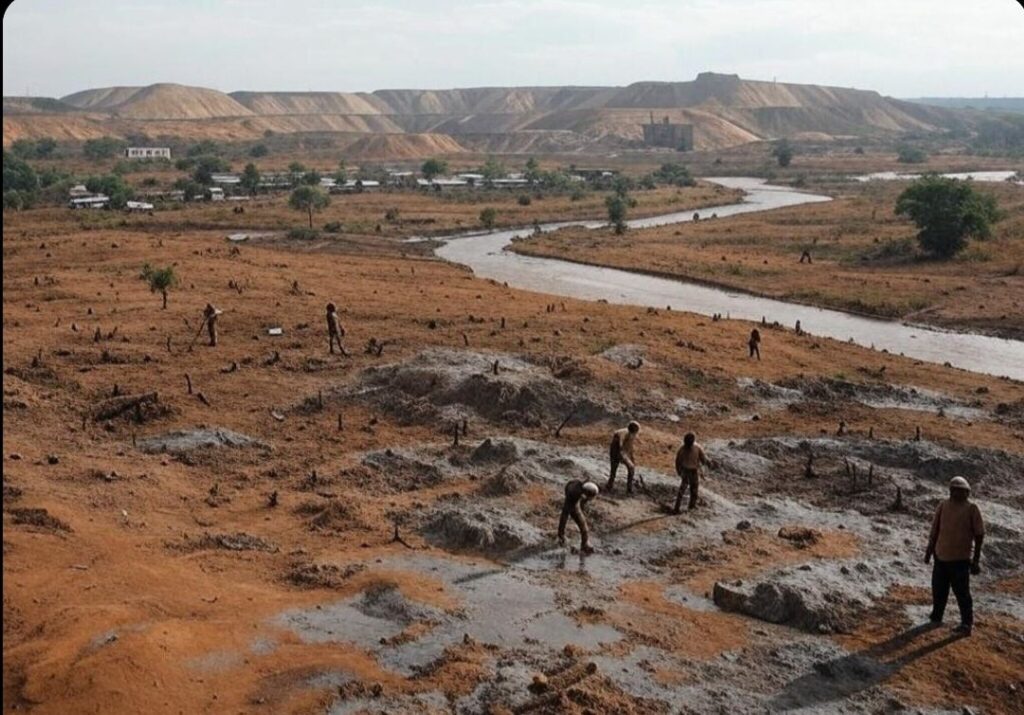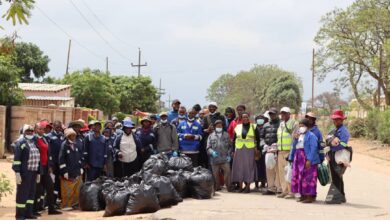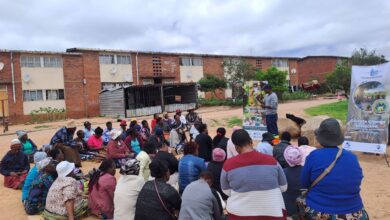Digging deep: The environmental cost of mining in Mat South


Peter Moyo
In the rugged, sun-baked landscapes of Matabeleland South, Zimbabwe, the earth tells a tale of prosperity shadowed by peril. This region, rich in minerals like gold and nickel, is marred by the scars of extensive mining activities, pitting economic necessity against environmental sustainability.
The Boom of Mining
The mining sector here has boomed, with key projects like the Blanket Gold Mine in Gwanda and the Shangani Nickel Mine driving economic activity. In 2022, mining projects valued at over US$10 billion were initiated, reflecting a national push towards exploiting lithium, among other minerals, to meet global demands. However, this economic surge brings significant environmental costs, particularly from artisanal and small-scale mining (ASM), which supports thousands but at the expense of the land.
The Human Impact
Musa Ncube, an artisanal miner from Filabusi, encapsulates the dilemma: “Mining is our bread and butter. But I see the land changing, the rivers turning muddy. We need to mine to live, but we must also protect the land for our children.” His words highlight a community caught between survival and sustainability.
Sibongile Masuku, an environmental activist, adds depth to the conversation, pointing out, “We’re losing biodiversity, our water sources are either drying up or getting polluted. It’s not just about today’s gains; it’s about what we leave for future generations.”
Edwin Moyo, a local farmer from Umzingwane, shares his struggles with the tangible effects on agriculture: “Our fields are now covered in dust from mining activities. The soil quality has deteriorated, and our crops suffer. We’re at a crossroads, supporting miners while trying to protect our land.”
Regulatory Responses
In an attempt to mitigate these environmental impacts, the Environmental Management Agency (EMA) has taken decisive steps. They’ve ordered a cessation of mining activities along the Umzingwane River to combat pollution, especially targeting operations by foreign firms accused of environmental harm. EMA’s new offices in Esigodini and Umzingwane aim to enhance oversight and enforcement of environmental regulations.
Community and Corporate Initiatives
On the ground, community groups are pushing for a balance. Education on sustainable mining practices is gaining traction, with some larger mining companies starting to implement land rehabilitation programs. However, the extensive, often unregulated nature of artisanal mining presents unique challenges for both education and enforcement.
A Call for Sustainable Practices
The narrative in Matabeleland South is one of a community at a pivotal moment, where the allure of immediate economic benefits clashes with the imperative to preserve the environment for future generations. The voices from the region are clear: there is an urgent need for sustainable mining practices, stronger enforcement of environmental laws, and a collaborative effort among miners, government, and environmental advocates.
This story not only sheds light on the current environmental and economic landscape of Matabeleland South but also underscores the need for a nuanced approach. Economic development must not come at the cost of the environment, requiring innovative solutions where both can coexist. The challenge is immense, but so is the resolve of the community to find a path forward that honors both their heritage and their future.





